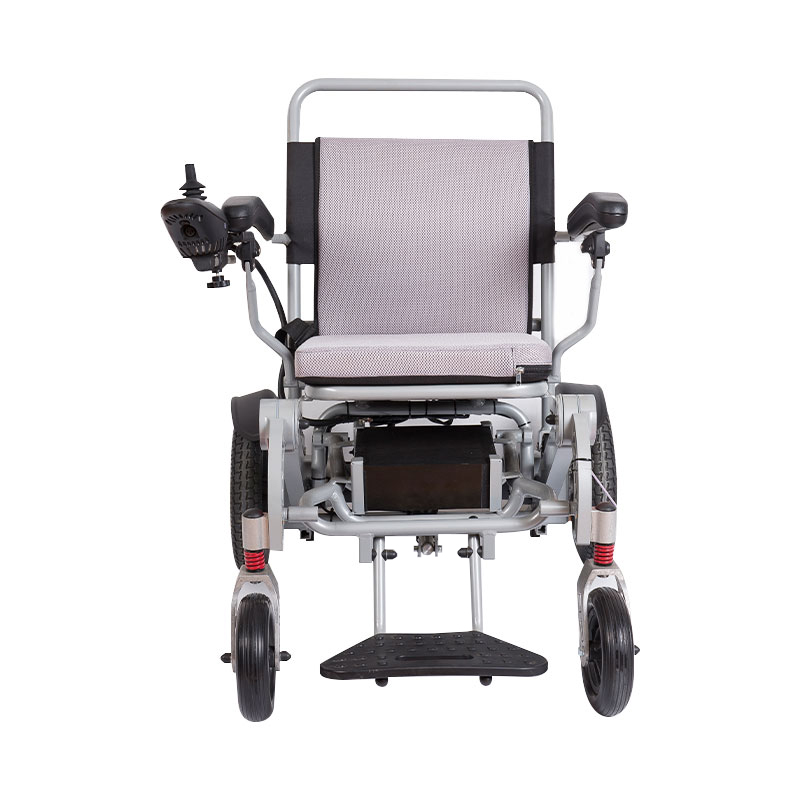How to train users on the use of Aluminum alloy electric wheelchair?
Training users on the use of an aluminum alloy electric wheelchair is essential to ensure their safety, comfort, and independence. Here are some steps and guidelines for conducting effective training:
1. Introduction and Familiarization: Start by introducing the user to the electric wheelchair and its components. Show them the control panel, joystick, battery, and any other relevant features. Familiarize them with the chair's basic functions.
2. Safety Precautions: Emphasize the importance of safety while using the electric wheelchair. Cover topics such as proper seating, securing the seatbelt, using anti-tip mechanisms, and avoiding obstacles.
3. Control Operation: Teach the user how to operate the joystick or other control system to move the wheelchair forward, backward, and turn. Show them how to control the speed and sensitivity settings.
4. Starting and Stopping: Demonstrate how to start and stop the electric wheelchair smoothly. Explain the use of emergency stop buttons if available.
5. Obstacle Navigation: Teach the user how to navigate around obstacles, including door thresholds, ramps, and tight spaces. Practice maneuvering in different scenarios.

6. Uphill and Downhill Maneuvers: If the electric wheelchair will be used on slopes, show the user how to safely move uphill and downhill. Emphasize the need for caution and slow speed on inclines.
7. Transfers: If the user will be transferring in and out of the electric wheelchair, demonstrate safe transfer techniques to prevent accidents.
8. Battery Charging and Maintenance: Instruct the user on how to charge the wheelchair's battery correctly and explain any maintenance tasks they need to perform regularly.
9. Indoor and Outdoor Use: If the electric wheelchair will be used both indoors and outdoors, teach the user how to adapt their driving style to different environments.
10. Practice Sessions: Allow the user to practice operating the electric wheelchair under supervision. Encourage them to take their time, ask questions, and gain confidence in using the chair.
11. Emergency Procedures: In case of emergencies or malfunctions, provide the user with instructions on what to do and how to seek help.
12. Rules and Regulations: If applicable, inform the user about any local laws or regulations regarding the use of electric wheelchairs in public spaces.
13. Review and Follow-Up: After the initial training, schedule follow-up sessions to review the user's progress and address any concerns or questions they may have.
14. Encourage Independence: Encourage the user to practice using the electric wheelchair independently once they are confident in their abilities. However, always make sure there is support available if needed.
15. Mobility Specialist Involvement: If possible, involve a mobility specialist or occupational therapist in the training process. They can provide valuable insights and tailored guidance based on the user's specific needs and abilities.
Remember that each user's learning pace may vary, so be patient and supportive throughout the training process. Reinforce safety practices and encourage the user to ask questions or seek assistance whenever needed. The goal is to empower the user to use the aluminum alloy electric wheelchair confidently and safely.


 English
English Deutsch
Deutsch







-3.jpg?imageView2/2/format/jp2)
.jpg?imageView2/2/format/jp2)






